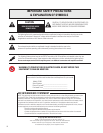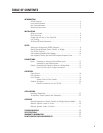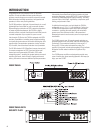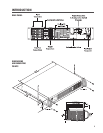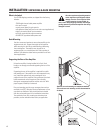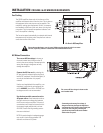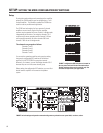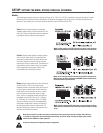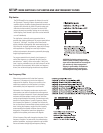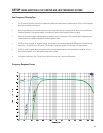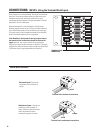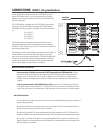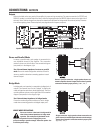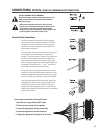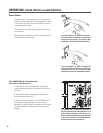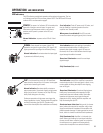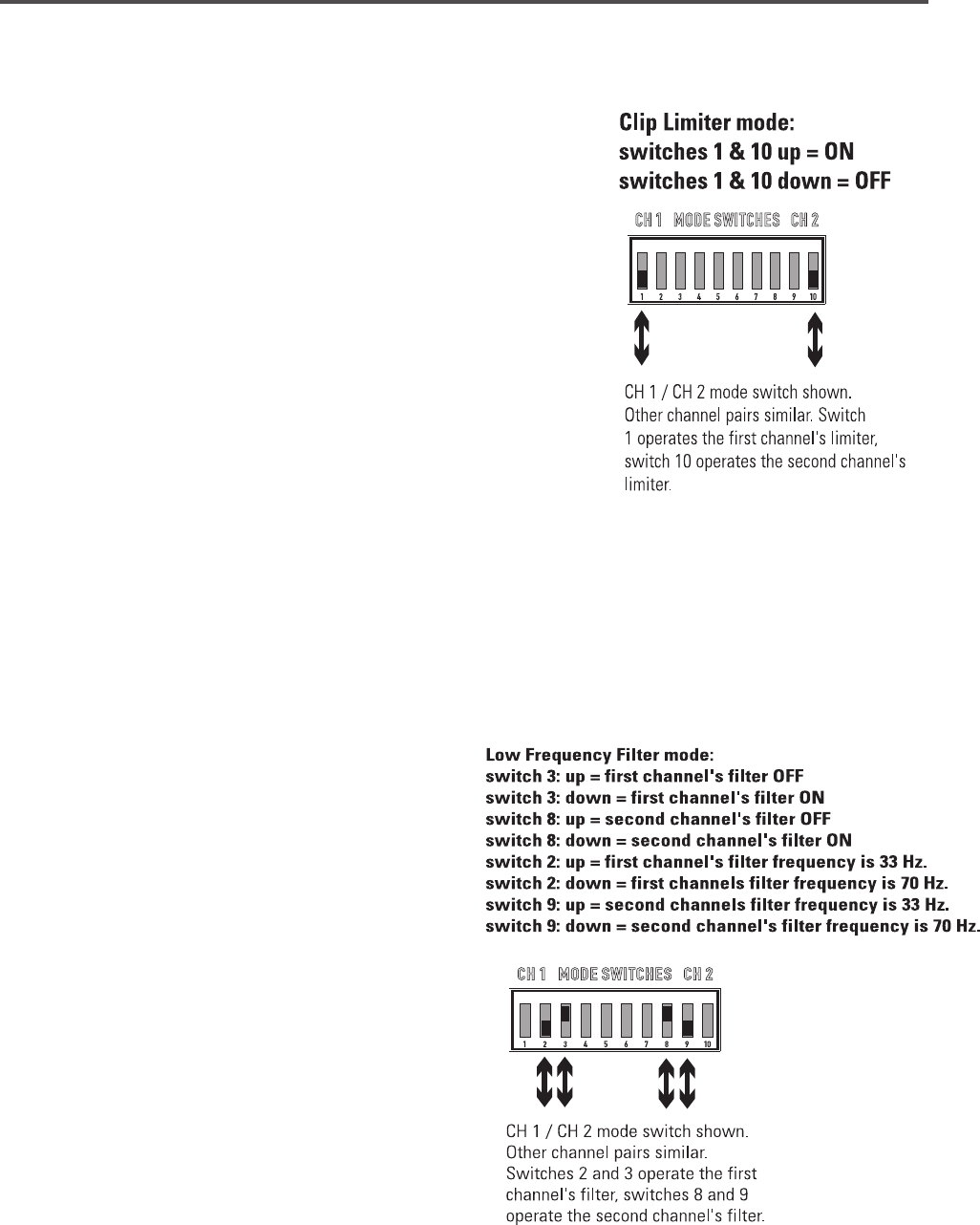
10
SETUP: MODE SWITCHES: CLIP LIMITER AND LOW FREQUENCY FILTERS
The CX168 amplifier has separate clip limiters for each of
the 8 channels. These clip limiters respond only to actual
amplifier clipping. Amplifier clipping generates internal error
signals which cause the clip limiter to quickly reduce gain
and minimize the overdrive. To preserve as much of the
program dynamics as possible, limiting occurs only during
actual clipping. Each channel’s clip limiter can be switched
on or off individually.
CAUTION! Clip limiting reduces extreme
overdrive peaks, allowing a higher average
signal level without distortion. Increasing the
gain with the clip limiter engaged until
clipping is again audible, can double the
average output power. Be careful not to
exceed the power rating of the speakers!
Clip Limiter
The clip limiter is internally set to respond as fast as
possible after clipping is detected. For program material that
is primarily “full-range”, the effect on the overall audio
quality should be imperceptible. We recommend using the
clip limiters for almost all applications, especially full-range
audio applications. Clipping can cause high-frequency
artifacts to be output to the speakers, potentially damaging
fragile high-frequency drivers.
For program material that is primarily low-frequency in
nature (low-frequency or subwoofer drive) this may be
perceived as a “rubbery” effect on the audio. If this is the
case, it may be preferable to turn the clip limiters off and let
the amplifier clip occasionally. With robust, low-frequency
drivers, the occasional clipping should cause no problems.
Low Frequency Filter
When driving speakers with limited low frequency
response, it is important to limit the low frequency
response of the amplifier. Doing so can result in more
usable bass response since the speaker is not being
overloaded by very low frequencies it can’t handle.
Explanation-
Low frequency sound waves require much
more speaker cone motion to produce the same apparent
loudness as higher frequencies. Properly designed speaker
enclosures help the speaker to move more air with less
motion using techniques like porting. Such enclosures only
benefit from porting down to a certain frequency. Below
this frequency, the speaker is “unloaded” and is basically
free to move around uncontrollably without producing much
bass. Limiting the frequency range of the low frequency
content enables the speaker to behave the way it was
designed to. If frequencies lower than designed are
supplied to the speaker, performance will degrade.
All low frequency filters will change the character of low
frequency transients. For best results, the cabinet design,
speaker capabilities, and program material must be taken
into account when configuring low frequency filtering.



